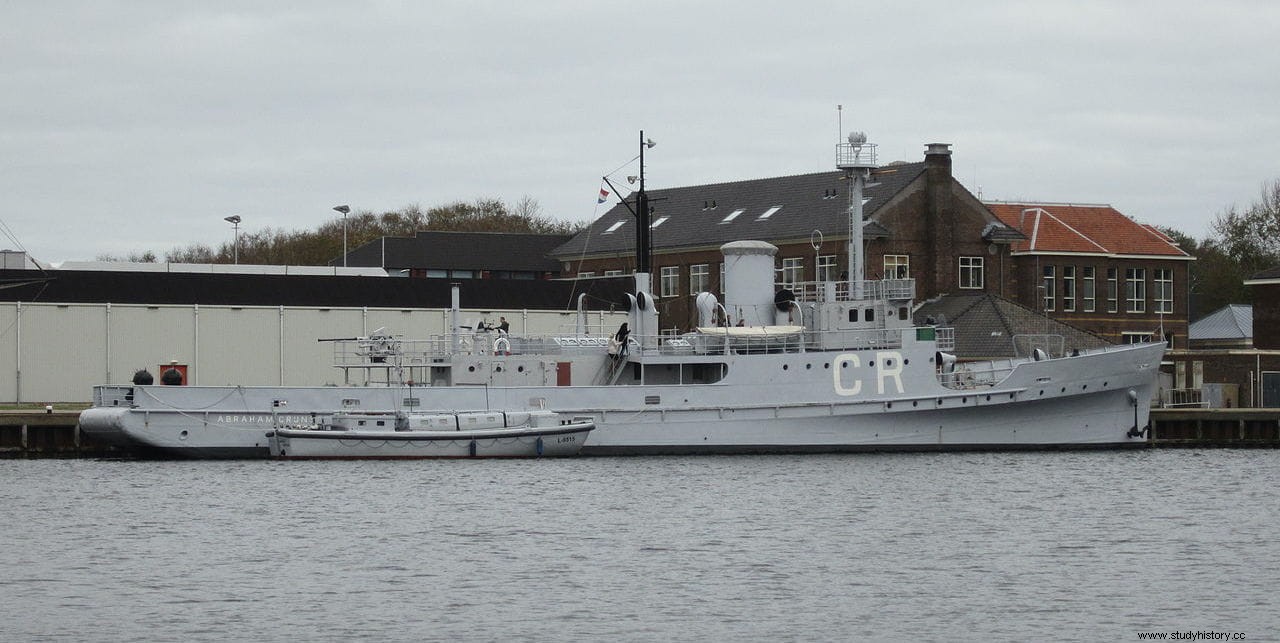On May 15, 1940, the Netherlands officially surrendered to the German army. However, numerous ships of his navy continued the fight throughout the conflict, some because at that time they were stationed in the Dutch East Indies and others because they managed to escape to England.
The Dutch Navy established its headquarters in London, from where the operations of its ships were directed in all theaters of war, starting with the Dunkirk evacuation.
One of these Dutch ships was the Abraham Crijnssen , a minesweeper based in Surabaya (today one of Indonesia's main ports). The Japanese seaborne advance, culminating in the Battle of Sunda Strait on March 1, 1942, forced all Dutch shipping to withdraw and seek refuge in Australian ports. The commander of the allied forces himself, Karel Doorman, who was Dutch, died during the battle.

The Abraham Crijnssen she left Surabaya accompanied by three other ships, but for unknown reasons she ended up lost and isolated en route to Australia. With the Japanese fleet patrolling the nearby waters, it occurred to the captain that the only chance they had of surviving was to camouflage the ship, since they did not have enough weapons to defend themselves against her. Not only that, camouflage it so that she looks like a small island . A ship that was 56 meters long.
They cut down large branches on a nearby islet and painted the hull in shades that resembled rocks and cliffs. The idea was to stay close to the coast during the day causing an optical illusion , so that from a distance the ship would go unnoticed against the vegetation, and travel at night.
And it worked, they managed to avoid the Japanese destroyers that patrolled the more than 18 thousand Indonesian islands in search of the remains of the Dutch fleet. It took eight days to complete the journey to Australia, and the Abraham Crijnssen it was the last ship that managed to escape from the Japanese in the Dutch East Indies.

Already part of the Australian Royal Navy, and with a British crew, the ship returned to service on September 28, 1942, acting as an anti-submarine escort and supporting the Dutch submarines operating in the area.
A year later she returned to the Dutch navy, and ended her tour of the war by clearing the port of Kupang in time for the arrival of the Australian contingent to accept the Japanese surrender of Timor. She was withdrawn from service in 1960 and assigned to training duties. In 1995 she acquired it the Dutch Naval Museum, where she can be visited today.
